|
|
|
|
 | | The FIP Investment Plan of Peru includes projects that will address a number of activities that will help preserve the rich biodiversity of the country. |
Peru has secured $50 million in funding from the Climate Investment Funds' Forest Investment Program (FIP) to be invested in activities that will fight deforestation and forest degradation throughout the country.
|
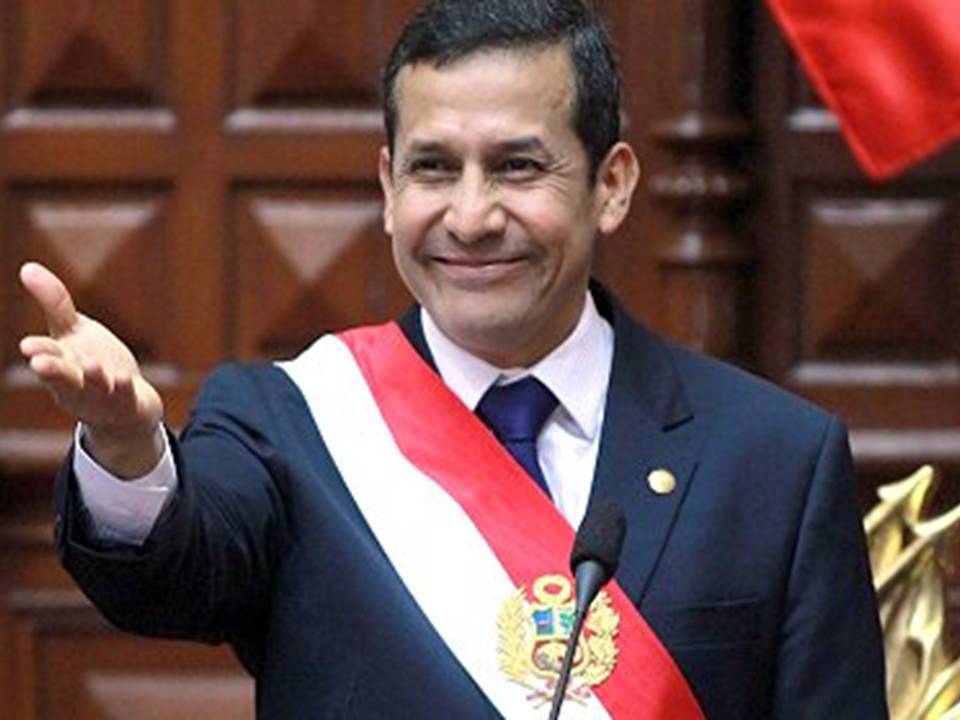 Peru's President Ollanta Humala swore in a widely praised regional politician as his fourth prime minister in a mini-cabinet reshuffle on Thursday, but retained his finance minister despite rumors he might quit. Peru's President Ollanta Humala swore in a widely praised regional politician as his fourth prime minister in a mini-cabinet reshuffle on Thursday, but retained his finance minister despite rumors he might quit.
|
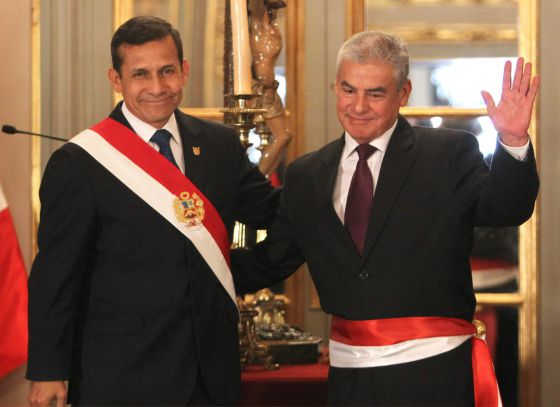 Peru's new Prime Minister Cesar Villanueva Arevalo has pledged to strengthen security and work hard to boost the economy of the South American country. Peru's new Prime Minister Cesar Villanueva Arevalo has pledged to strengthen security and work hard to boost the economy of the South American country.
|
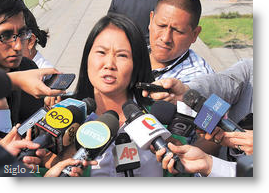 Former presidential candidate Keiko Fujimori said her party would return a campaign donation made by an individual that the US government has added to its "Kingpin List" this week, over allegations of laundering money for drug traffickers. Former presidential candidate Keiko Fujimori said her party would return a campaign donation made by an individual that the US government has added to its "Kingpin List" this week, over allegations of laundering money for drug traffickers.
|
 The Banco Interamericano estimated today that the construction of roads in the mountains and jungle could decrease transportation costs, and therefore increase exportation.
|
 Visit by Indian Vice President Hamid Ansari has led to strengthening of commerce ties between the two nations. The newly established Indian Chamber of Commerce (Incham) in Peru is encouraging local entrepreneurs to take advantage of the great economic and business opportunities offered by the Indian market. According to Incham President Ravi Krishna, the sectors that might catch the attention of Peruvian investors in the near future are agriculture, tourism and gastronomy.
|
 The ratings assigned to Agrobanco reflect the potential support from the Republic of Peru, whose ratings were recently upgraded by Fitch to 'BBB+/A-' In Fitch's opinion, Agrobanco is an integral and key part of the government's economic policy toward the agricultural sector.
|
 In Fitch's opinion, Cofide, Fondo Mivivienda and Banco de la Nacion perform basic financial functions (collections and payments through Banco de la Nacion) and carry out economic policy in specific sectors (Infrastructure through Cofide, housing through Fondo Mivivienda). Hence, support from the government should be forthcoming, if needed, which underpins the fact that these entities' IDRs are aligned to the sovereign's.
|
 There's a reason why you're not hearing much about Peruvian oil investment, and that is because production has been going down the drain for a number of years. Peru started off in 1980 with a crude oil production rate of up to 200,000 bpd, but this trended downward to a little over 60,000 bpd in 2012. But the good news is that a number of oil companies are still hopeful of Peru's potential, and all the nation needs is a little more foreign investment to increase output.
|
 Peru has one of the largest supplies of renewable water resources in the Americas, but faces challenges in delivering clean water to its population. Peru has one of the largest supplies of renewable water resources in the Americas, but faces challenges in delivering clean water to its population.
|
 Peru's Ministry of Foreign Trade and Tourism (Mincetur), will participate in next week's plurilateral talks toward a trade in services agreement, a World Trade Organisation (WTO) trade facilitation pact. Peru's Ministry of Foreign Trade and Tourism (Mincetur), will participate in next week's plurilateral talks toward a trade in services agreement, a World Trade Organisation (WTO) trade facilitation pact.
|
 Mobile phones and ancient Inca technology are coming together to enable survivors of forced sterilization to tell their stories and campaign for justice. Next year is likely to see a re-opening of the legal case concerning Peru's scandalous sterilization of 300,000 women - many of them forced or without their informed consent.
|
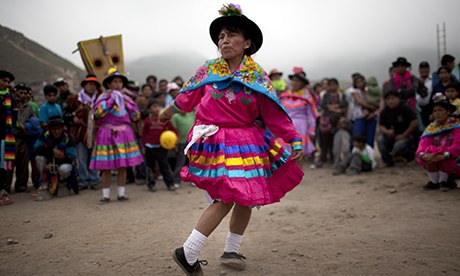
Indigenous women in Latin America continue to face great gaps in access to higher education, health services and employment, although there have been significant educational advances, according to a report by the UN's Economic Commission for Latin America and the Caribbean.
|
 Vice President Marisol Espinoza presented the first chocolate to be made by Aguaruna natives at the Salon du Chocolat event in Paris. Peru's cacao is well known for its high quality and smooth taste, but Peru's presence at the event in the French capital was about more than chocolate. Peru's work to move farmers away from growing coca (which in many cases is then used to produce cocaine) was vindicated at the Salon.
|
 Allegro Coffee's new collaboration with Codemu Women's group is about empowering women and shrinking the gap between men and women. Dora Lisa Carrion Gomez, a Codemu farmer and co-owner of the café says that the partnership with Allegro Coffee has helped the community immensely. "These projects have been very good for the group and its members... They have given us a sense of belonging and achievement that is hard to express with words," she said.
|
 Huancavelica's name originated from the Quechua words "huanca" and "huillka," which translates as "stone idol." Huancavelica is located in the Central Region of Peru, in the Andean region, about 3,676 meters (12,060 ft.) above sea level. It is known for its big mountains, that can be seen along the landscape, and its majestic mines. The Cordilleras of Urpicota and Marcavalle cross the department of Huancavelica, making this a very mountainous department.
|
 About 160,000 Peruvian and foreign tourists are expected to visit this year the Royal Tombs of Sipan Museum in Lambayeque, a 15 percent drop compared to 2012. About 160,000 Peruvian and foreign tourists are expected to visit this year the Royal Tombs of Sipan Museum in Lambayeque, a 15 percent drop compared to 2012.
|
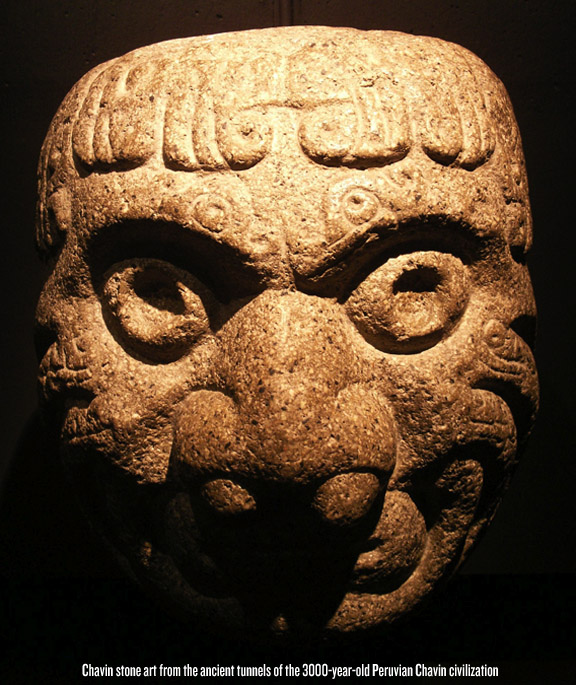 Walter Alva, director of the Royal Tombs of Sipan Museum, has announced the discovery of a 3,000-year-old religious center built by the Chavin culture in the Lambayeque region of northern Peru. Two monoliths were found in the central part of the temple, which may have been dedicated to the water and fertility cult. "We're thinking that it's an oracle from the Chavin epoch, with subterranean structures, enclosures and spaces reserved for the Chavin priests," he said. Walter Alva, director of the Royal Tombs of Sipan Museum, has announced the discovery of a 3,000-year-old religious center built by the Chavin culture in the Lambayeque region of northern Peru. Two monoliths were found in the central part of the temple, which may have been dedicated to the water and fertility cult. "We're thinking that it's an oracle from the Chavin epoch, with subterranean structures, enclosures and spaces reserved for the Chavin priests," he said.
The site, which was named the Oracle of Congona, was apparently used during two periods and one of these shows direct Chavin influence, the Chavin culture being one of the main pre-Incan cultures of northern Peru.
|
 |
 "We're entering the world of the play now, Alejo, its constructed universe. Give in to it." That's what Henry, a character in Daniel Alarcón's second novel, "We're entering the world of the play now, Alejo, its constructed universe. Give in to it." That's what Henry, a character in Daniel Alarcón's second novel, At Night We Walk in Circles , tells his young acolyte as they head for the mountainous hinterlands, but it might as well be a direct note from Alarcón to his readers. What follows is an intricate story woven from the blurry lines between fact and fiction, cut from the same Modernist cloth as the novels of Roberto Bolaño, the late Chilean writer to whom Alarcón, a Peruvian-born, San Francisco-based writer, has often been compared since his celebrated fiction debut in 2007,Lost City Radio .
Published this week by Riverhead, At Night We Walk in Circles follows Nelson, a young, aspiring actor and playwright, as he becomes entangled with the vestiges of the activist theater troupe Diciembre.
|
 Peruvian writer Mario Vargas Llosa told a full house in the University of Delaware's Clayton Hall on Thursday evening that when he sits down to write a novel, the process "is fascinating and mysterious, but it is not fun." Peruvian writer Mario Vargas Llosa told a full house in the University of Delaware's Clayton Hall on Thursday evening that when he sits down to write a novel, the process "is fascinating and mysterious, but it is not fun."
|
 Many Peruvians once again faced the dilemma of celebrating either their "Criolla" Music Day or Halloween on the night of October 31. Many Peruvians once again faced the dilemma of celebrating either their "Criolla" Music Day or Halloween on the night of October 31.
|
|
|
|
|
Although Ten Top News Peru may include links providing direct access to other Internet resources, including Web sites, the Embassy of Peru in the USA is not responsible for the accuracy or content of information contained in these sites. Links from Ten Top News Peru to third-party sites do not constitute an endorsement by the Embassy of Peru of the parties or their products and services. The Embassy of Peru in the United States does not endorse either the content or information contained in the selected stories. Furthermore, the stories have been selected based on their circulation in the Web, as trending tropics.
Copyright © Embassy of Peru in the USA. All Rights Reserved.
|
|
|